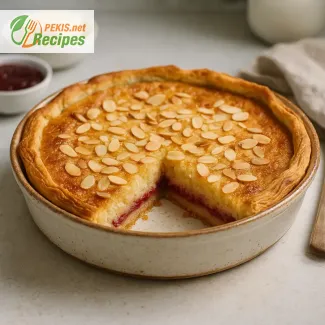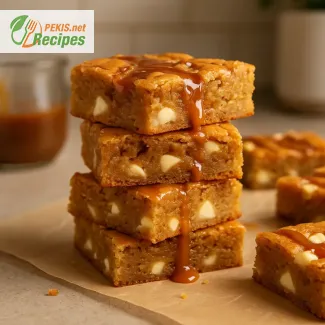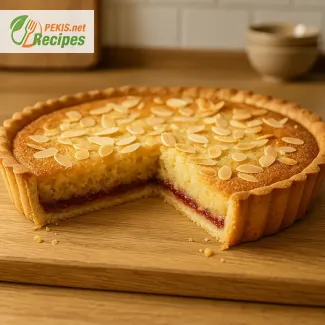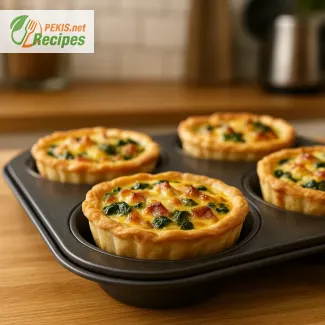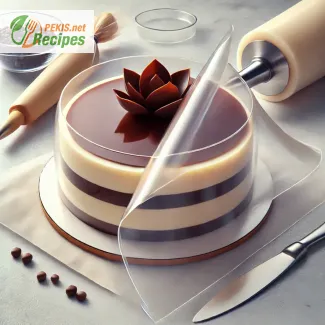
Acetate foil, often simply called acetate, has become a cornerstone in culinary arts, particularly within pastry and confectionery work. This versatile tool serves multiple purposes, from helping craft intricate chocolate decorations to creating the ideal structure and form in multi-layered desserts. In high-end kitchens and patisseries worldwide, acetate foil is lauded for its ability to deliver aesthetic precision, structural integrity, and practical convenience. Below, we delve into the numerous reasons why acetate foil has become indispensable in the culinary world.
1. Perfectly Smooth, Clean Edges
One of acetate foil’s most valued uses is in creating perfectly smooth, clean edges on cakes, mousses, and other layered desserts. Traditional cake rings and molds are effective but can still leave uneven or slightly textured edges, which don’t present as cleanly. Acetate foil, however, adheres smoothly to soft fillings and creamy textures, providing a flawless surface as each layer is added. When the acetate strip is removed after setting, it reveals perfectly sharp edges, enhancing the dessert’s visual appeal. This is particularly important for high-end patisseries and gourmet restaurants where the presentation is as critical as flavor.
2. Support for Layering and Complex Structures
Acetate foil is also critical for building layered and structured desserts. Mousse cakes, trifles, and various layered confections benefit from acetate’s stability, as it holds each layer in place, preventing slippage and preserving form. By lining the inside of a mold or ring with acetate, chefs can easily pour layers without worrying about filling smudging against the sides or spreading unevenly. The transparency of the acetate allows chefs to monitor each layer visually, ensuring even distribution, symmetry, and aesthetic precision.
Additionally, acetate foil is thin yet sturdy, making it ideal for delicate and intricate designs that require firm support without excessive bulk. This is especially useful in creating parfaits or entremets with multiple thin layers, where each layer contributes distinct flavors and textures. Without acetate, such intricate layerings could blend together, lose definition, or shift out of place.
3. Essential in Chocolate Work
Acetate foil is a favorite tool for working with chocolate, primarily because of its ability to create a smooth, glossy finish. When tempered chocolate is spread onto acetate and allowed to set, it retains a beautiful sheen that makes the chocolate look polished and luxurious. The acetate serves as an ideal non-stick surface, releasing the chocolate easily without damaging its form or finish.
For chefs and chocolatiers creating chocolate decorations, curls, or intricate shapes, acetate is unmatched. It allows them to mold and shape chocolate into delicate pieces that would be impossible on other surfaces. Once the chocolate sets, it can be lifted cleanly off the acetate, preserving the integrity of each piece. This capability is crucial for delicate decorations that need a seamless, professional look, such as chocolate collars for cakes or individual chocolate garnishes.
4. Achieving Glossy Caramel and Sugar Decorations
Similar to chocolate, caramel and sugar work benefit significantly from acetate’s properties. Sugar art requires precision, as sugar decorations are often delicate and prone to cracking or sticking. Acetate provides a non-stick, heat-resistant surface that supports sugar work as it cools and hardens, ensuring that it retains its shape and glossy appearance. Whether creating spun sugar, caramel shards, or isomalt decorations, acetate allows pastry chefs to work with high-heat sugar compounds confidently.
5. Enhancing Hygiene and Cleanliness in Presentation
In professional kitchens, hygiene and presentation are critical, especially in pastry work where each element must be handled carefully to maintain its appearance and safety. Acetate foil is hygienic and disposable, providing a clean barrier between food and other surfaces. It’s especially useful for lining molds and containers used to set creams, mousses, or sauces that will be served directly to guests. Unlike permanent molds or rings that require washing and can harbor residue, acetate foil can be discarded after use, which prevents any transfer of flavors or odors and simplifies kitchen clean-up.
6. Versatility in Creative Presentation
Acetate is beloved by chefs for the creative freedom it allows in food presentation. Its transparency and flexibility mean that chefs can experiment with unique presentations, including curved or spiraled forms and visually striking layers. Acetate strips can be trimmed, folded, or even curved to fit within unusual molds, allowing pastry chefs to think outside the box and craft desserts with unique structures. This is invaluable for intricate desserts like domes, parfaits, or individual cake portions, where the design is paramount.
7. Convenience for Individual Portioning
In large-scale catering or events, where desserts are pre-portioned, acetate foil simplifies the process. Chefs can line small molds or rings with acetate, fill each with the desired layers or filling, and then remove the molds to reveal neatly portioned servings. Acetate strips ensure that each portion maintains a polished, uniform look, regardless of the type of filling. This is especially useful for plated desserts or dessert buffets, where consistency is essential.
8. Heat Resistance for Special Techniques
Although acetate is primarily used with cold or room-temperature ingredients, it also withstands moderate heat, making it a useful tool in techniques like tempering chocolate or shaping gelatin-based desserts. It does not melt or deform under mild heat, allowing chefs to work confidently with ingredients that require warmth for optimal texture or shape. This resistance to heat also makes it a reliable choice for handling warm caramel or sugar solutions, ensuring safety and effectiveness.
9. Ideal for Transport and Presentation Stability
For chefs who prepare desserts for events, acetate foil is an essential tool for ensuring that delicate cakes and pastries arrive in pristine condition. When lining desserts with acetate, chefs create a protective barrier that holds everything in place during transport, preventing slipping, smudging, or melting. This stability is vital for intricate or layered desserts that could otherwise lose form or become damaged during travel.
10. Supporting Sustainable and Disposable Use
While professional kitchens often rely on reusable molds, acetate’s disposable nature can actually enhance sustainability in certain contexts. By eliminating the need for frequent washing, acetate can reduce water use and prevent the wear and tear associated with metal or silicone molds. Additionally, high-quality acetate can be recycled in some cases, reducing environmental impact when used thoughtfully.
Acetate foil offers chefs unmatched control over the aesthetic and structural integrity of their creations. From perfect edges on cakes and layered desserts to seamless chocolate decorations, its versatility, non-stick properties, and ease of use make it an invaluable asset in the culinary world. Beyond presentation, acetate enhances hygiene, simplifies clean-up, and even supports complex sugar and chocolate work that demands precision and stability. Its transparent, heat-resistant, and moldable qualities provide endless possibilities, empowering chefs to achieve a level of finesse that elevates culinary art to new heights.
Acetate foil is a prized tool in culinary arts, especially in pastry and dessert preparation, offering a blend of functionality, precision, and aesthetic appeal that few other materials can match. Below, we explore why acetate foil is indispensable in professional kitchens and how chefs utilize its unique properties.
Why Acetate Foil Is Essential
Acetate foil stands out for its smooth, non-stick, and flexible nature, enabling chefs to create clean, sharp edges and intricate shapes without compromising the integrity of their desserts. The foil’s transparency allows chefs to visually monitor their creations as they set, ensuring accuracy and consistency across each layer. Additionally, its disposable nature offers hygiene and convenience, which are paramount in professional kitchen environments. Acetate is used in a variety of creative and practical applications, including chocolate decoration, layered cakes, and caramel garnishes, to name a few.
Key Uses of Acetate Foil in Cooking
1. Creating Smooth, Defined Edges
- Perfect Layers in Cakes: Acetate foil allows pastry chefs to build beautifully layered cakes and mousses. By lining the inside of molds or cake rings, acetate creates a seamless surface for fillings and layers, which then set with flawless, professional edges. When the dessert is unmolded, each layer is revealed with smooth precision, free from rough textures.
- Sharp Presentation: For high-end pastry presentations, sharp edges are essential. Without acetate, it is difficult to achieve clean, defined edges in soft or creamy desserts, as molds alone often create slight indentations or textures.
2. Supporting Multi-Layered Constructions
- Stability in Layered Desserts: Acetate foil helps stabilize the structure of complex desserts, such as entremets, where each layer has its own texture and flavor profile. The foil provides a gentle, non-stick barrier that holds each layer in place as it sets, allowing chefs to craft visually appealing, multi-layered creations.
- Precise Layering for Visual Appeal: Acetate is especially useful for parfaits or verrines with multiple layers, where precision is key to achieving an attractive presentation. Its transparency enables chefs to visually check each layer’s thickness and alignment as they assemble the dessert.
3. Chocolate Decoration and Molding
- Glossy Chocolate Decorations: Acetate foil is essential for working with chocolate. By spreading tempered chocolate onto acetate, chefs can create glossy finishes and intricate shapes, such as spirals, curls, or delicate chocolate bands. The non-stick quality of acetate allows the chocolate to be lifted cleanly once it hardens, preserving its shine and form.
- Precision in Chocolate Collars: Chocolate collars are a popular way to decorate cakes and desserts, and acetate foil is ideal for shaping them. By wrapping a chocolate-covered acetate strip around a cake, chefs achieve an elegant, decorative border that is both smooth and visually striking.
4. Caramel and Sugar Work
- Stable Surface for Sugar Work: Acetate foil is also widely used for sugar decorations, providing a non-stick surface that can withstand the high temperatures of caramel and sugar solutions. This quality is invaluable when creating delicate sugar art, such as isomalt shapes or spun sugar, which require stable cooling surfaces.
- Preserving Gloss in Caramel: Just as with chocolate, acetate preserves the gloss in caramel work. Once cooled, caramel decorations peel easily from the acetate, allowing chefs to create perfectly smooth, shiny pieces that serve as attractive garnishes on desserts.
5. Simplifying Individual Portioning
- Consistent Portions for Events: For catering and event preparations, acetate foil makes portioning easier. Chefs can use it to line small molds or rings, ensuring each individual serving has a clean, consistent presentation. This is particularly useful for buffets or plated desserts, where uniformity is key.
- Practical for Layered Mini Desserts: Acetate is commonly used in single-serving layered desserts, like mini mousse cups, where precise layering is just as important as in larger cakes. The foil keeps each serving separate and visually appealing, which is ideal for high-volume production in catering.
6. Creative Freedom in Shaping and Presentation
- Flexible Molding for Custom Shapes: Acetate’s flexibility allows chefs to experiment with shapes and presentations, creating unique structures like domes, cylinders, or spiral forms. By trimming or bending the acetate, chefs can mold desserts into creative shapes that add a sophisticated, customized look.
- Elevating Aesthetic Value: In modern gastronomy, where appearance is just as important as taste, acetate foil provides chefs with the freedom to innovate. Transparent and adaptable, it complements avant-garde plating styles and enhances the visual appeal of desserts.
7. Ensuring Hygiene and Clean-Up Efficiency
- Disposable and Hygienic: In professional kitchens, where hygiene is paramount, acetate foil offers a clean, single-use surface that reduces cross-contamination. This makes it suitable for high-hygiene applications, particularly with delicate creams, mousses, and sauces that come into direct contact with the lining material.
- Reduced Clean-Up Time: Acetate simplifies clean-up, as molds and rings lined with it stay cleaner and require less scrubbing. For busy kitchen environments, this efficiency allows chefs to focus on other tasks without sacrificing cleanliness.
8. Stability for Transport and Presentation
- Protecting Delicate Structures: When transporting delicate layered cakes or multi-component desserts, acetate foil provides structural support, helping the dessert maintain its shape. This is essential for caterers and event planners who need assurance that each dessert will arrive in perfect condition.
- Maintaining Freshness in Presentation: For plated desserts that may need to sit out during service, acetate helps retain a polished appearance by supporting the structure of each layer or decorative element.
Acetate foil plays a vital role in elevating the precision, hygiene, and visual appeal of modern desserts. Its use extends from pastry kitchens to high-end catering events, where presentation quality must meet the highest standards. Each of acetate foil’s characteristics, from its transparency and smoothness to its flexibility and stability, addresses specific culinary needs that traditional materials cannot. Whether creating flawless edges, glossy chocolate decorations, or innovative dessert structures, chefs rely on acetate foil to achieve impeccable results.
This versatile material not only enhances the aesthetics of each dish but also provides practical benefits that streamline workflow and ensure hygiene in professional kitchens. Its continued popularity in culinary arts is a testament to its value in creating desserts that are as beautiful as they are delicious, making acetate foil a truly indispensable tool in the world of fine dining and professional pastry.
Why is acetate foil indispensable in cooking?
Acetate foil is an essential tool in culinary arts due to its unique combination of functionality and aesthetic enhancement, particularly in pastry and dessert preparation. Its smooth, non-stick, transparent qualities allow chefs to create clean edges, intricate decorations, and layered presentations, making it ideal for precision work. Acetate’s ability to hold delicate ingredients in place without damaging texture enables the crafting of complex, multi-layered desserts. From supporting chocolate work to stabilizing caramel and sugar art, acetate foil is indispensable for achieving professional, high-quality results.
Key Reasons Acetate Foil Is Indispensable in Culinary Use:
- Perfect, Sharp Edges
- Layered Desserts: When creating delicate layers in cakes or mousse desserts, acetate foil helps achieve precise, clean edges that make each layer distinct and visually appealing. Traditional molds can sometimes leave uneven edges, but acetate, when used as a lining, allows for flawless results that give desserts a polished, professional finish.
- Multi-Layered Structural Support
- Stability in Entremets and Parfaits: Acetate’s durability and non-stick nature make it perfect for multi-layered desserts like entremets, trifles, or parfaits. Chefs can layer various textures—creams, mousses, gels, and more—without them merging or slipping. The transparency of acetate further ensures that each layer is visible, allowing chefs to monitor and adjust the thickness for visual precision.
- Chocolate Work and Decoration
- Glossy Finish for Chocolate: Acetate foil is a preferred surface for working with chocolate as it provides a glossy finish upon cooling. Chefs use acetate to create smooth, even chocolate sheets, decorations, and curls that maintain their structure and shine, crucial for garnishing high-end desserts. The non-stick quality also means that chocolate peels away cleanly without compromising its form, which is essential for achieving fine, detailed shapes.
- Caramel and Sugar Art
- Supporting High-Heat Sugar Work: For sugar and caramel creations, acetate provides a heat-resistant, non-stick surface that prevents sticking and maintains the integrity of delicate sugar decorations. This is important for spun sugar, caramel shards, or even more elaborate sugar sculptures, which require precise handling. Acetate’s smooth surface allows sugar decorations to retain a glassy, elegant finish.
- Efficient Individual Portioning
- Catering and Buffet Use: In high-volume environments, acetate is invaluable for maintaining uniformity in individual portions. By lining small molds, chefs can ensure that each dessert maintains a consistent shape, size, and quality, which is essential for events where multiple guests are served simultaneously. This helps maintain presentation standards while simplifying the process of removing each portion from its mold.
- Versatile Creative Shaping and Molding
- Flexible Design for Unique Forms: Acetate foil can be cut, shaped, or bent to fit a wide array of molds, allowing chefs to experiment with creative presentations. From spirals to dome shapes, acetate empowers chefs to push their culinary creativity and produce unique dessert designs that capture attention. This flexibility is especially valued in gourmet settings, where presentation is a key component of the dining experience.
- Enhanced Hygiene and Simplified Cleanup
- Sanitary Single-Use Lining: Acetate foil supports hygiene by providing a clean, disposable lining that minimizes cross-contamination risks. After use, acetate is discarded, reducing the time needed for cleaning reusable molds and ensuring that each dessert is free from previous residues. This efficiency in sanitation is essential in professional kitchens where time and cleanliness are highly prioritized.
- Stability for Transportation and Presentation
- Preserving Dessert Integrity: Acetate provides crucial structural support during transportation, keeping multi-layered or delicately garnished desserts stable. For catered events, this stability prevents damage during transit, ensuring that desserts arrive in perfect condition. This feature is particularly useful for elaborate creations, such as wedding cakes, that demand structural integrity and visual appeal upon arrival.
Acetate foil’s versatility and durability have made it indispensable in the culinary world, particularly for pastry and dessert chefs. Its uses span from providing clean edges and layered stability to enabling complex chocolate and sugar decorations, making it a fundamental tool for precision and presentation. Beyond functionality, acetate adds significant value by enhancing hygiene, speeding up cleanup, and ensuring that each dessert achieves a polished, professional look. Whether crafting multi-layered masterpieces or delicate chocolate curls, chefs rely on acetate to achieve high standards of culinary artistry, elevating desserts to both visual and gustatory perfection.

